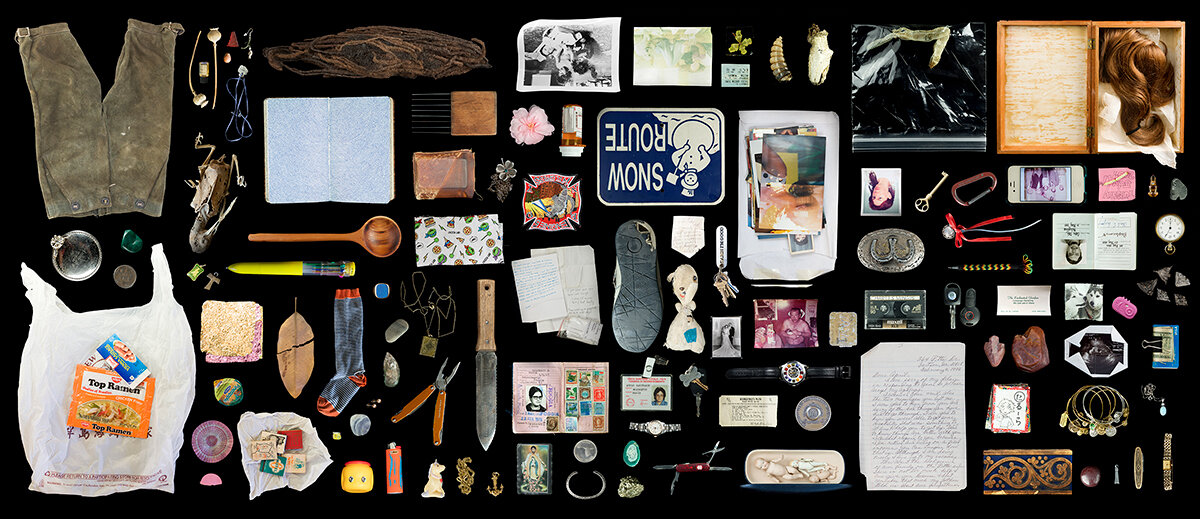© Kija Lucas. Objects to Remember You By: An Index of Sentiment, vitrine #7, Archival Pigment Print 32x74", 2014-2020
The Museum of Sentimental Taxonomy, a roving photography exhibition Kija Lucas, showcases the emotional power of objects – those we cherish and those we carry that house memory and meaning.
When my wife and I prepared to move from San Francisco to Berkeley nearly three years ago, I paused to think about one of the items that sits on my desk: a small, painted wooden bird sculpture that fits comfortably in the palm of my hand. This orange, black, and turquoise token has been with me for 35 years. I vividly recall the face of the young woman who offered it as a parting gift at the end of her eighth-grade birthday party. Ann’s genuine smile suggested that I - a mouthy, atheist social outcast with unpopular opinions about Utah’s dominant religion - was welcome in a cool girl’s house.
Why do we hold onto objects that are emotionally potent, but carry no monetary value?
Whether the associated memories are happy or sad, why do we accept the material burden that the items pose?
These are two of the underlying questions that shape photographer Kija Lucas’s project The Museum of Sentimental Taxonomy (MoST), Lucas’s crowd-sourced project visually coalesces sentimental objects brought in by participants. Looking at the large composite prints, it’s alluring to speculate about the objects and the strangers who possess them. Lucas resists that pull, thinking instead about wider contexts, particularly archiving as a remnant of settler-colonialism.
I spoke with Lucas about the project, which is on view at California Institute of Integral Studies through May 16th, its origin, and how it eludes familiar institutional archival practices and the resulting production of knowledge.
Roula Seikaly in conversation with Kija Lucas





